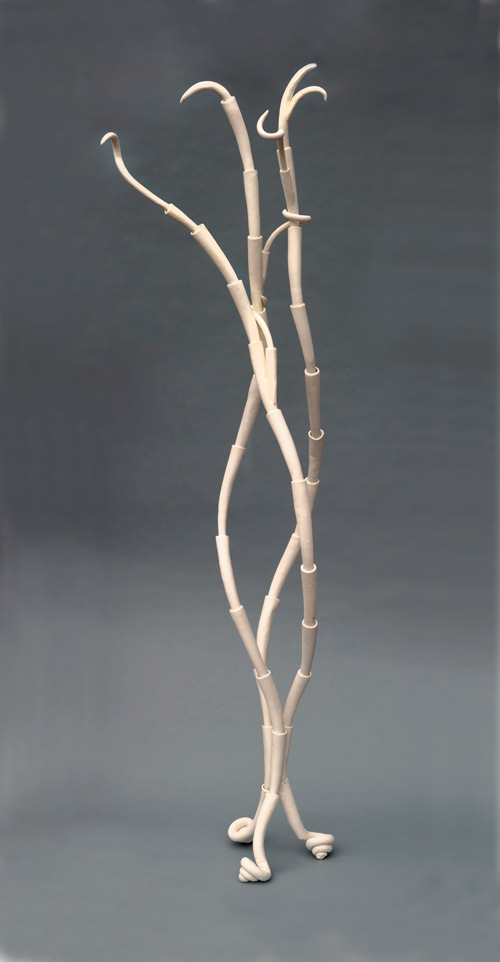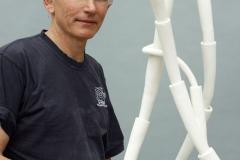 Working with paper clay will certainly ruin your relationship with conventional clay. Perhaps “ruin” is too strong a word, but it is likely that once you’re exposed to it, you won’t turn back. I went down the paper clay rabbit hole in 1993 and never found my way back out. Making and using this material has disrupted my thinking about clay and continues to lead me into strange and wonderful lands.
Working with paper clay will certainly ruin your relationship with conventional clay. Perhaps “ruin” is too strong a word, but it is likely that once you’re exposed to it, you won’t turn back. I went down the paper clay rabbit hole in 1993 and never found my way back out. Making and using this material has disrupted my thinking about clay and continues to lead me into strange and wonderful lands.
I was introduced to paper clay in 1992 by ceramics chemist Jaromir (Mike) Kusnik, who had originally read about European industrial ceramic engineers' experiments in creating refractory paper clay sheets to protect kiln shelves. He developed his own recipe, then began teaching and exhibiting paper clay works in 1987 in Perth, Western Australia. Western Australia is a geographically remote state with a strong pioneering ethos. Perhaps the clear advantages of the material, and a propensity for fearless experimentation among potters in this part of the world explain why about a third of all clay used in studios and classrooms in Western Australia today is paper clay, despite the nearest manufacturers being 2,000 miles away in Melbourne. Over the ensuing decades, as word spread of the advantages of paper clay, all Australian and many European clay manufacturers began providing their traditional earthenware, terra-cotta stoneware, and porcelain clays in paper clay form. This trend is still underway in the United States.
At my paper clay workshops, I regularly discover that many participants already take advantage of its rapid drying and re-wetting properties, but are often unaware of its other, equally useful advantages. For example, artists can combine thin, dry unfired (and even fired) sections with soft paper clay to build new and usual forms, or use it simply to speed up their studio production. These advantages lead to new studio processes, and more importantly, new ways of thinking.
In this article I want to lead you further down the rabbit hole, looking at more radical possibilities, such as inserting metal into the paper clay. I’ll give a brief overview of other artists who are adding metal to paper clay, then talk about my work and techniques. I will also outline issues that practitioners might be mindful of when trying this themselves.
Peers

